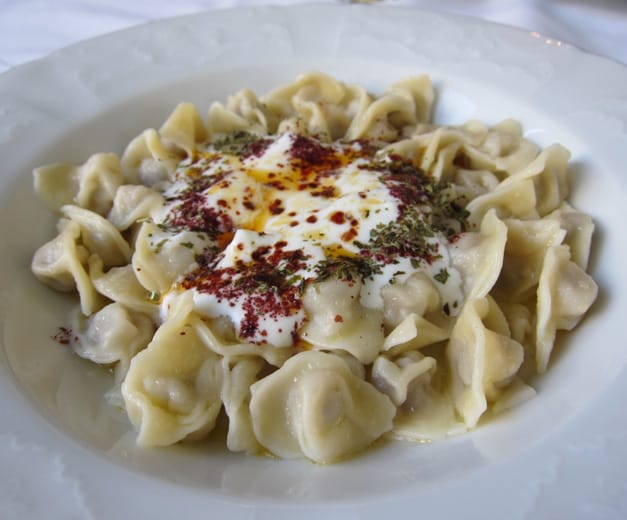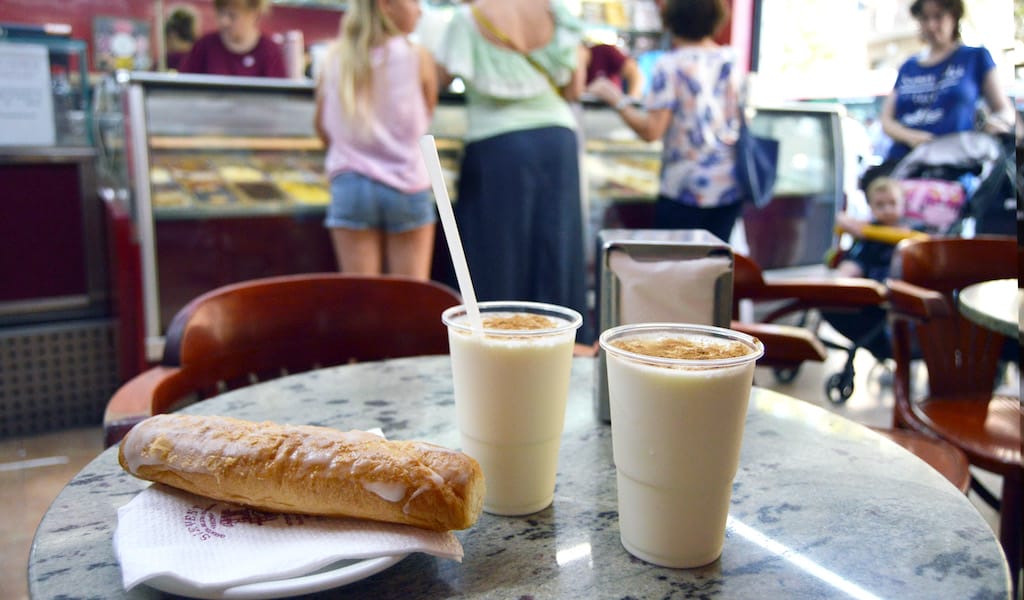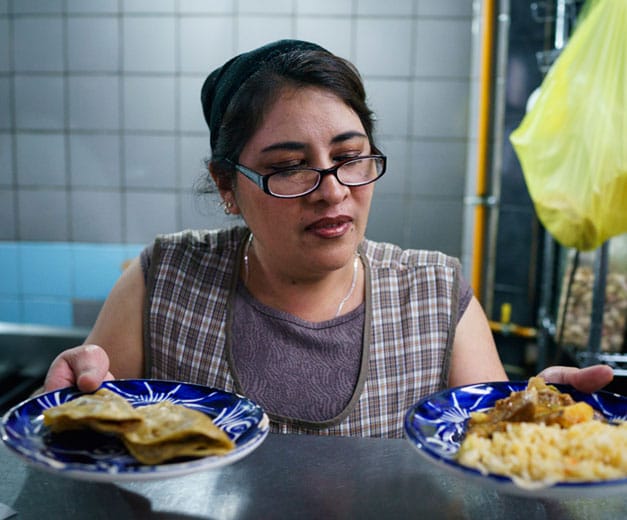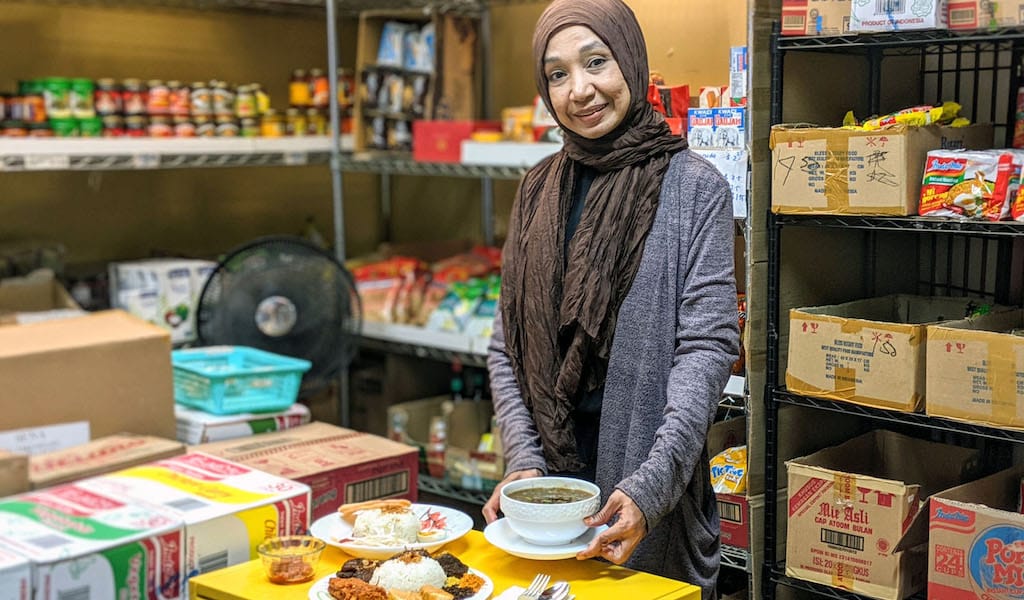Editor’s note: We are sad to report that Gülbi’s has closed.
“I’m not a missionary, but I am not doing this just to make a profit. People must see that there is mantı outside of Kayseri, there’s Crimean Tatar mantı, as well,” explained Gülben Resuloğlu, in front of her restaurant in the leafy Feneryolu district of Istanbul’s Asian Side. If Martha Stewart were in the mantı (also known as “Turkish ravioli”) business, her place would look just like Gülbi’s – meticulously decorated in pastels, white and floral prints. Everything matched, even the two neatly dressed women who welcomed us: Gülben (the Gülbi in question) and her sister, Leyla. But kept just behind tidy appearances, we discovered, is the pain of being Tatar. We’re convinced that this identity, which was forged in the fire of dispersal and diaspora, made the food taste better.
Gülbi’s family was forced into exile in the mid-19th century at the time of the Crimean War, when Russia was engaged in a struggle with the Ottoman Empire. Tatars were thought to be Ottoman sympathizers, so being one in the Crimea was dangerous indeed. Fearing for their lives, they settled in Dubroja, then part of the Ottoman Empire and now part of Romania, where a Tatar diaspora was already set up. There, the Tatar language, a cousin of modern Turkish, and culture incubated in the tight folds of a community positioned on major 20th-century fault lines. They survived the fall of the Ottoman Empire, the creation of Romania, famine, Communism, Fascist purges and the Second World War. Meanwhile, back in the Crimea, the remaining Tatars were exiled by Stalin to Uzbekistan, with devastating consequences. But Gülben and her family remained in Dubroja until 1970, when, exhausted by Ceausescu’s police state, they made their final move to Istanbul, a city, according to Gülben, that her great-grandfather had been aiming for when he was waylaid in Romania. A pastoral nomadic life might be the idealized side of the Tatar identity, but to be a refugee is a reality all Tatars know well, Gülben explained.
Then she offered us a menu. We ordered one of everything.
“Because we are nomads, we don’t have much to do with vegetables. Meat and hamur işi [dough-based foods] are the essence of Crimean Tatar cuisine,” she continued.
Shorpa, a thin broth made from sheep bones and a little bit of yogurt, was brightened by fresh mint and scallions. We would encounter this fragrant, tangy broth throughout the meal, but enjoyed it as a warm-up at the meal’s start.
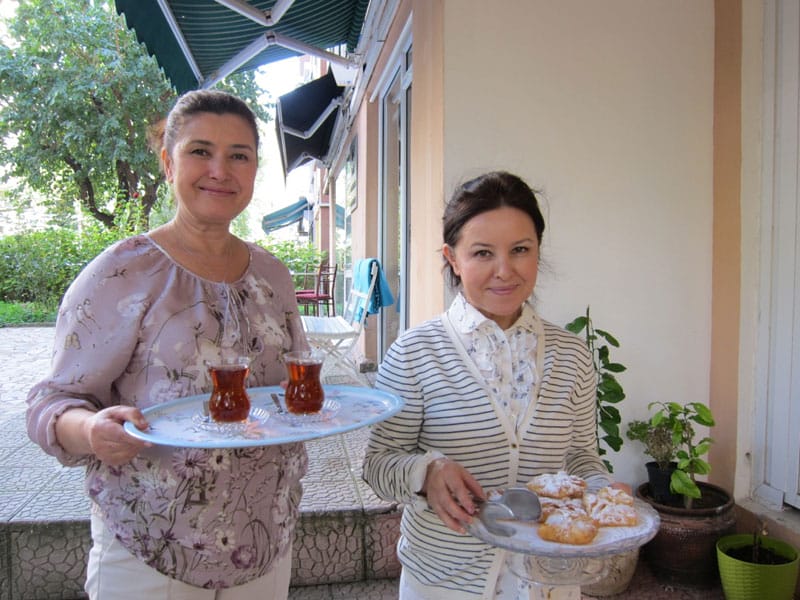
What is known in Turkey as “çiğbörek” (uncooked börek) is actually “chuborek” to the Tatars, who introduced this popular pastry to Turkey. The word “chu,” close in pronunciation to the Turkish “ciğ,” refers to the sound made as the puffed-up pastry deflates – the only food we know of that is named after the passing of gas. As you tear open the flaky pastry shell, you’ll be enveloped in a whoosh of broth-laced steam and will understand the pleasure of snacking à la Tatar.
Out came thick squares of Tatar chicken pie, called kobete. “This is a meeting food. Whenever there is a birth or a wedding, there is kobete,” said Gülben. Spicy and rich as the filling was, we got the feeling that kobete could be filled with just about anything; the purpose of the dish is to showcase the pastry skills of the cook. Gülben’s were beautifully crafted, with a firm crust and a golden-brown surface covered with sesame and black cumin seeds.
Equally impressive were the mantı, the pride of Gulbi’s kitchen. Across the mantı-making zone that encompasses the Crimea and runs clear out to China, there have got to be thousands of different ways of folding mantı and at least as many ongoing debates about which is the best. Our most memorable mantı was the one filled with piping hot soup that scalded us on the street in Shanghai, but we were deeply impressed by Gülben’s delicate, ear-shaped dumplings. Working the architecture between our teeth, we tried to identify what was so special about these. It might be the unique folding technique, or the way Gülben prepared the dough to be extra soft (“not like hard Kayseri mantı”) or the subtle flavor range lent by that bewitching broth – all valid remarks in the great mantı debate. But we kept returning to this mantı as a monument to Tatar survival, not just hot chow.
This particular little folk-art object, along with Gülben and many people of Tatar origin living in Turkey, made it here against tremendous odds. This dimension, the human side of what’s on the plate, is the special sauce that can turn a good meal into a rich culinary experience. We applaud Gülben and Leyla for sharing their story, satisfying our hunger for the abstract stuff folded into such a humble-seeming, little dough-wrapped package.
 July 26, 2018 Leche Merengada
July 26, 2018 Leche Merengada
For some inexplicable reason, leche merengada, or meringue milk, a traditional Spanish […] Posted in Barcelona March 31, 2015 El Dux de Venecia
March 31, 2015 El Dux de Venecia
Visiting establishments with a lot of history always warms the cockles of our heart – […] Posted in Mexico City November 8, 2019 Indo Java Groceries
November 8, 2019 Indo Java Groceries
For those not in the know, the bright yellow table behind the shelves at Indo Java […] Posted in Queens
Published on January 23, 2014
Related stories
July 26, 2018
BarcelonaFor some inexplicable reason, leche merengada, or meringue milk, a traditional Spanish summer drink, has fallen out of favor over the past few decades – industrial ice creams and sodas, with their multicolored flavors, bubbles and fantasy frozen shapes, have seduced local palates, making this monochrome drink pale in comparison. Well, we say that it’s…
March 31, 2015
Mexico CityVisiting establishments with a lot of history always warms the cockles of our heart – even more so when that establishment is the oldest surviving cantina in the city. El Dux de Venecia didn’t start out as a cantina, but it became a drinking establishment in Azcapotzalco – a farming community that became part of…
Join our walk for a deep dive into the immigrant cooking experience in Queens!
November 8, 2019
QueensFor those not in the know, the bright yellow table behind the shelves at Indo Java Groceries in Elmhurst, Queens, may seem like nothing more than a curious design choice. But what they don’t realize is that this table is a sign of something great – it means that one of three chefs is in…







































